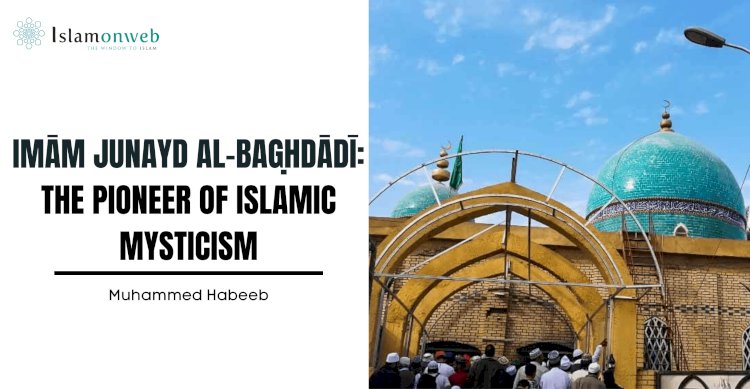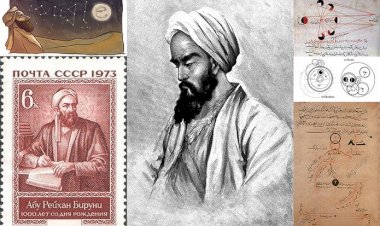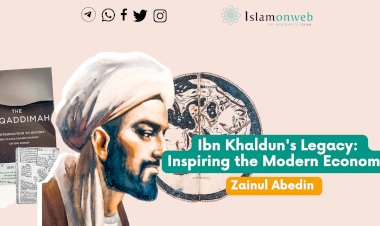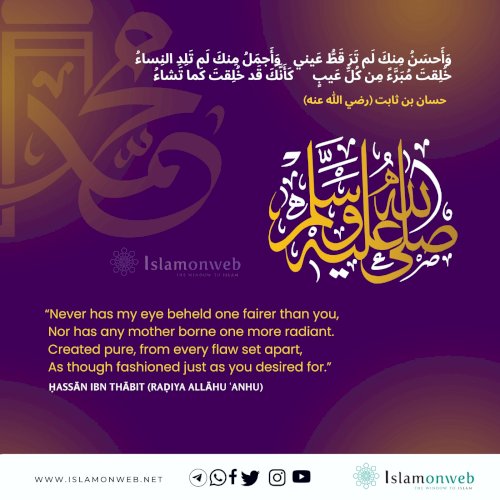IMĀM JUNAYD AL-BAGḤDĀDĪ: THE PIONEER OF ISLAMIC MYSTICISM
Imām Junayd al-Baghdādī, a prominent figure of the 3rd century Hijrī, is widely regarded as one of the foremost Ṣūfī mystics in Islamic history. He played a pivotal role in integrating taṣawwuf into the framework of Islamic belief, working to dispel the perceived contradiction between Ṣūfī teachings and mainstream Islam. Through his profound spiritual insights and firm grounding in the Qur’ān and Sunnah, he contributed to establishing taṣawwuf as an essential dimension of Islamic practice.
Junayd al-Baghdādī’s efforts were instrumental in bridging the gap between taṣawwuf and the scholars of fiqh, reconciling their perspectives and earning him broad recognition within Ṣūfī circles. For his commitment to engaging with society and guiding the people without retreating into isolation, he was honoured with the title Sayyid al-Ṭāʾifah (Master of the [Ṣūfī] Order). In the following, we take a brief glimpse into the eventful life and legacy of Imām Junayd al-Baghdādī.
Early Life and Education
Imām Junayd al-Baghdādī was born in 215 AH in the city of Baghdād. Though his family hailed originally from Nahāwand, he was raised in Iraq. His father worked as a glassmaker, a trade in which Junayd occasionally assisted, earning him the epithet al-Qawārīrī—meaning "the glassmaker." He is also referred to as al-Baghdādī, a nod to his birthplace.
Al-Baghdādī began his journey in religious learning under the guidance of his maternal uncle, the renowned Ṣūfī master Sirrī al-Saqṭī, a disciple of the venerable Maʿrūf al-Karkhī. This early influence left a lasting mark on Junayd’s spiritual outlook and shaped the foundational elements of his taṣawwuf. Alongside spiritual training, he also pursued formal legal studies under Abū Thawr, a prominent student of Imām al-Shāfiʿī. It is reported that he began issuing fatāwā in Abū Thawr’s presence at the remarkably young age of twenty—an early testament to his intellectual precocity.
One notable incident highlights Junayd al-Baghdādī’s exceptional insight from childhood. At the age of seven, he was present during a discussion among scholars led by Sirrī al-Saqṭī on the concept of shukr (thankfulness). When asked for his view, the young Junayd responded, “It is not to disobey Allah with the blessings He has given”—a response that stunned those present with its depth and clarity.
Two towering figures played an instrumental role in shaping al-Baghdādī’s intellectual and spiritual persona: his uncle Sirrī al-Saqṭī and Imām al-Ḥārith al-Muḥāsibī. While Sirrī al-Saqṭī introduced him to key spiritual virtues such as submission, divine love, thankfulness, and tawḥīd (Oneness of God), it was Imām al-Muḥāsibī who expanded his horizons, guiding him toward diverse fields of knowledge and refining his distinct approach to Ṣūfīsm. Though he was mentored by these masters, Junayd developed an independent and authoritative understanding of taṣawwuf early on—an ability he himself often affirmed through his discourses and reflections.
Ḥalqah (Study Circles)
When Imām Junayd al-Baghdādī reached the age of thirty, his uncle Sirrī al-Saqṭī deemed him ready to lead ḥalqāt (study circles) in the mosques. However, Junayd hesitated, feeling unworthy of such a weighty responsibility. He did not consider himself prepared for this significant role.
One Friday night, he saw the Prophet Muḥammad ﷺ in a dream, who instructed him, “Speak to the people.” Upon waking, he rushed to his uncle to share the vision. Sirrī al-Saqṭī responded with a knowing remark: “You wouldn’t have believed us until you were told.” The command of the Prophet ﷺ was decisive. The very next morning, Junayd began his teaching circles at the al-Manṣūr Mosque in Baghdād.
At the time, mosque study circles mainly focused on fiqh, ḥadīth, and ʿulūm al-Qur’ān (Qur’anic sciences). Ṣūfī teachings, by contrast, were typically restricted to private spiritual gatherings. Imām Junayd al-Baghdādī thus became one of the earliest figures to openly teach taṣawwuf in mosque-based ḥalqāt. His sessions drew a wide range of attendees, including jurists, philosophers, mutakallimūn (theologians), writers, and fellow Ṣūfīs—testifying to the depth and breadth of his influence.
Taṣawwuf
Imām Junayd al-Baghdādī sought to redefine taṣawwuf by highlighting it as the inner dimension of Islam rather than a separate or peripheral aspect of Islamic teachings. He firmly established that taṣawwuf is not simply a collection of ascetic practices or mystical expressions, but a spiritual path rooted in the Qur’ān and Sunnah.
In Al-Risālah al-Qushayriyyah (The Epistle on Ṣūfīsm), Imām al-Qushayrī preserves several of Junayd al-Baghdādī’s concise and profound definitions of taṣawwuf:
“It is not about the abundance of prayer and fasting, but about having a pure heart and being selfless.”
“It is a war in which there is no peace.”
al-Baghdādī also said,
“We did not take taṣawwuf from talks or words, but from hunger and detachment from the world, and by leaving the things to which we were accustomed and which were agreeable to us.”
These statements encapsulate the essence of the Ṣūfī path: one of rigorous self-discipline, inner purification, and sincere renunciation of worldly comforts—far beyond intellectual comprehension alone.
Junayd recorded his spiritual reflections and Ṣūfī insights in various treatises later compiled under the title Rasā’il al-Junayd. These writings significantly influenced later generations of Ṣūfī scholars and became foundational in the development of Islamic mysticism.
His thought was primarily shaped by three central doctrines:
- Theory of Mithāq (Primordial Covenant): Referring to the spiritual pledge taken by human souls before their earthly existence, affirming the Lordship of Allah—{أَلَسْتُ بِرَبِّكُمْ} “Am I not your Lord?” (Qur’ān 7:172).
- Theory of Fanā’ (Spiritual Annihilation): The process of dissolving the ego (nafs) and worldly attachments to attain union with the Divine presence.
- Theory of Tawḥīd (Oneness of God): Not merely a theological assertion, but the ultimate experiential truth a Ṣūfī seeks to realise through love, devotion, and complete inner transformation.
These three elements together outline the journey of a seeker towards complete absorption (fanāʾ) in the Divine Reality.
Despite his elevated spiritual status and scholarly depth, Junayd al-Baghdādī continued working in his humble trade as a glassmaker. His constant remembrance of Allah permeated every aspect of his life—even his profession. One of his students remarked that he would offer up to three hundred rakʿāt of prayer each day from within his shop. He placed particular importance on fasting, viewing hunger as a vital means of spiritual refinement. For him, renouncing worldly desires was essential for drawing nearer to Allah and a key to maintaining harmonious human relationships.
Junayd was more than an ascetic or mystic; he was deeply grounded in Islamic sciences as well. His knowledge, however, was not just inherited from teachers but cultivated through prolonged spiritual discipline. When asked about the source of his knowledge, he replied:
“From sitting before Allah for thirty years, under those stairs,”—pointing to a corner of his home.
He once expressed the value he found in the path of taṣawwuf by saying:
“If I had known of any science greater than Ṣūfīsm, I would have gone to it, even on my hands and knees.”
Legacy and Impact
Imām Junayd al-Baghdādī left an enduring legacy that deeply shaped the trajectory of later taṣawwuf. He is widely revered as the uncontested master of the Ṣūfīs of Baghdād, and many prominent Ṣūfī orders—such as the Shādhilī and Rifāʿī—trace their chains of spiritual transmission (silsilah) back through him, affirming his profound influence on the development of Islamic mysticism.
Though much of his literary output was lost to the ravages of time, Rasā’il al-Junayd remains the most prominent among the thirty-one works attributed to him. His teachings, both spoken and written, became a foundational source for Ṣūfī scholars and seekers alike. It is reported that he performed the Ṣubḥ prayer with the same ablution (wuḍūʾ) taken for ʿIshāʾ—a practice he maintained for nearly thirty years, underscoring his extraordinary spiritual discipline.
His impact extended beyond his writings to the influence he had on his students. Abū al-ʿAbbās ibn Surayj, one of his most notable disciples, famously remarked when asked about the source of his knowledge:
“This is by the blessing of my sittings with Junayd al-Baghdādī.”
Imām Junayd passed away in 297 AH in the city of Baghdād. His passing drew an immense outpouring of love and reverence, with an estimated sixty thousand people gathering to attend his funeral and pay tribute to the great master of taṣawwuf.
As he lay on his deathbed, Junayd al-Baghdādī gave an unusual instruction: he asked that all the written sayings attributed to him be buried. When asked why, he replied:
“I desire to meet Allah without anything being attributed to me, while the knowledge of the Prophet of Allah ﷺ is still among them.”
In this final act of humility, Junayd embodied the essence of taṣawwuf—self-effacement, sincerity, and devotion stripped of ego. His life and teachings continue to inspire generations of seekers on the path of inner purification, selflessness, and closeness to Allah.
About The Author
Muhammed Habeeb is a degree scholar at Darul Huda Islamic University, specialising in the Department of ʿAqīdah and Philosophy.
References
- Hakim, Su‘ad. Tāj al-‘Ārifīn al-Junayd al-Baghdādī: al-A‘māl al-Kāmila. 2nd ed. 1426 AH.
- Setiawan, Cucu, Maulani, and Busro. "Sufism as The Core of Islam: A Review of Imam Junayd Al-Baghdadi’s Concept of Tasawwuf." Teosofia: Indonesian Journal of Islamic Mysticism 9, no. 2 (2020). https://doi.org/10.21580/tos.v9i2.6170.
- Sells, Michael A., ed. Early Islamic Mysticism: Sufi, Qurʼan, Miraj, Poetic and Theological Writings. New York: Paulist Press, 1996.
- Al-Qushayri. Al-Qushayri's Epistle on Sufism. Translated by Alexander D. Knysh. Reading, UK: Garnet Publishing, 2007.
- https://islamonweb.net/ml/Junaid-al-Baghdadi-RA-The-Shining-Star-of-the-Sufi-World
- "Hazrat Junaid Al-Baghdadi (R.A.)." Naqeeb of Baghdad, January 31, 2018. Accessed February 13, 2025. https://naqeebofbaghdad.wordpress.com/2018/01/31/hazrat-junaid-al-baghdadi-r-a/.
Disclaimer
The views expressed in this article are the author’s own and do not necessarily mirror Islamonweb’s editorial stance.
1 Comments
-

-

Author
6 months ago
Thank you for your comment! I looked into your question, and I couldn’t find any direct source stating that Imam Junayd had nine formal teachers, including a child or a thief. However, I believe you might be referring to a well-known teaching in the Islamic spiritual tradition, where wisdom can come from anyone, even a child or a thief, as a reminder that life itself can be a teacher. Imam Junayd’s primary teacher was his uncle, Sari al-Saqati, from whom he learned most of his Sufi knowledge. He was also deeply guided by divine inspiration and spiritual insight. I appreciate your curiosity. Feel free to ask more questions anytime!
-
























Leave A Comment